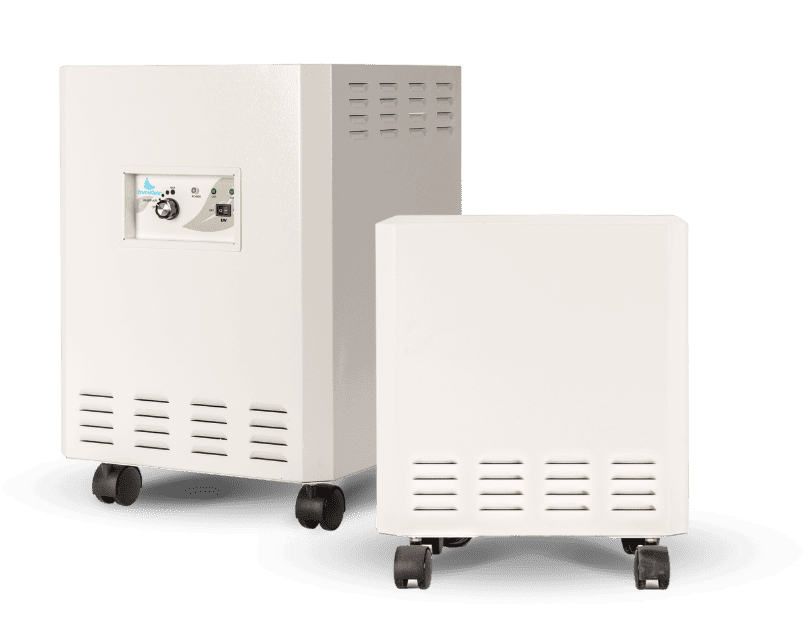Believe it or not, indoor air quality (IAQ) has plenty to do with your respiratory health. For example, you have a higher chance of experiencing shortness of breath and dizziness if you spend time in a dusty room. This is especially true if you have an existing health condition like asthma or anemia.
However, whether or not you have a medical condition, keeping your indoor space free of contaminants and pollutants is a step in the right direction if you’re trying to minimize the uncomfortable feeling of “air hunger.”
Before we get into ways to improve good IAQ, here are some common things in your house that can make you dizzy and struggle to breathe.
Possible Causes Of Shortness Of Breath And Dizziness At Home
Cleaning Products
Not all household cleaners are created equal. Some cleaning products are made with harsh chemicals that can negatively impact respiratory health or worsen existing health conditions.
Thankfully, some cleaning products like EnviroKlenz Laundry Enhancer Liquid contain non-toxic ingredients and zero harsh chemicals. And because it doesn’t have fragrances, it is less likely to trigger any issues with breathing or a feeling of lightheadedness.
Like household cleaners, exposure to certain personal care products can irritate the lungs due to their chemical content, leading to shortness of breath and dizziness.
Besides feeling lightheaded, continuous exposure to these products can irritate the skin and eyes and may trigger allergic reactions.
Perfumes are common personal care products that can take your breath away, literally! The respiratory sensitizers in perfumes can trigger asthma, wheezing, and difficulty breathing.
For this reason, it is important to avoid using products with strong smells and scents if you have breathing problems. Also, remember to let family and friends understand how strong smells and scents may affect your breathing.
Harmful Gasses From Household Appliances
Household appliances like heaters and stoves (fuel-burning types) release gases and other pollutants, which can be harmful if inhaled in excess or for a long time.
Unfortunately, some of these gases are colorless and odorless, so you’re less likely to notice them. Common gases from fuel-burning household appliances include carbon monoxide, sulfur dioxide, and nitrogen dioxide.
Secondhand Smoke
While anyone can choose their lifestyle, you might want to avoid smoking cigarettes indoors if someone in your household has a breathing problem. You might want to reconsider the habit if that someone is you.
Here’s why.
Inhaling cigarette smoke combined with the air you breathe (secondhand smoke) can have severe adverse effects on you. Data between 1964 and 2020 from the US Department of Health and Human Services shows that about 2.5 million nonsmokers have lost their lives due to breathing secondhand smoke.
With over 4,000 chemicals, cigarette smoke poses serious health risks to smokers and nonsmokers as well. It can cause cancer, heart disease, stroke, lung disease, and chronic obstructive pulmonary disease (COPD).
Smoking can also cause high blood pressure, orthostatic hypotension, abnormal heart rhythm, and damage to your heart muscle.
Pesticides
Although they are designed to kill pests, all pesticides pose some risk to humans. Exposure to pesticides affects the nervous system, which can cause nausea, vomiting, dizziness, heart palpitations, and headache, depending on the level of exposure. In severe cases, it can also cause convulsions, trouble breathing, and loss of consciousness.
While it might not be practical for some people to completely avoid using pesticides, you can reduce your exposure to the chemicals and avoid pesticide poisoning.
Wash your fruits and vegetables properly before eating. Ventilate your home thoroughly after applying any pesticide. Keep pesticides away from children, pets, and their toys. Also, ensure they don’t come anywhere near areas where the product is applied for as long as the manufacturer recommends.
Air Pollution From Live Sources
If you’re feeling a little faint or having dizzy spells, although you use non-toxic personal care products and cleaning products, you might want to visually inspect your house for signs of mold and mildew.
Shortness of breath and dizziness accompanied by a runny nose, sneezing, or sore skin might also indicate the presence of dust mites and cockroaches.
Concerned about mold in your home? We recommend reading our article on how mold grows indoors to learn effective ways to prevent it.
Air Pollution From Remodeling
Wear and tear are normal if you’ve lived in your house for a while, which calls for remodeling. Even if your home isn’t exactly in shambles, it is okay to want to change things up a bit.
Here’s the thing with remodeling; it exposes you and everyone in your household to air pollutants that can cause difficulty breathing and other physical symptoms. It may not be obvious, but introducing new carpets and pieces of furniture into your home may expose you to potentially harmful chemicals, at least for a few hours or days.
This is especially true if the items are newly painted, and as you probably know, exposure to paint smells and fumes can irritate the throat, eyes, and skin.
Here’s another common way remodeling can contaminate indoor air. Adding new floor tiles or insulation during a bathroom or kitchen facelift is common. What you may not know is that these building materials contain asbestos. Asbestos fibers can become airborne when disturbed and cause severe health problems, including permanent lung damage, coughing, and shortness of breath.
The longer you stay indoors during remodeling, the higher your chances of inhaling pollutants, which might cause shortness of breath and dizziness.
Improve Indoor Air Quality In Your Home
You can breathe easier and minimize a feeling of wooziness and breathlessness by taking steps to improve IAQ in your living space. Adding portable air cleaners and upgrading your HVAC system is a step in the right direction for improving the air in your home.
The EnviroKlenz Air System Plus is a must-have portable air purifier for every homeowner looking to implement unmatched air filtration in their living spaces. The air cleaner uses patented three-stage filtration process to capture, remove, and destroy 99.9% of toxic pathogens and chemicals found in indoor air.
People with respiratory concerns like chronic obstructive pulmonary disease (COPD) and asthma are better off with non-toxic cleaning products and personal care products to reduce shortness of breath and dizziness.
However, keeping indoor air clean isn’t exclusively for people with existing medical conditions and those having difficulty breathing. For this reason, it is important to take preventive measures to reduce exposure to gas and vapor contaminants, as well as particulate contaminants, in indoor spaces.
EnviroKlenz® Medical Disclaimer:
“Any information that is provided on this website is not for the use by any commercial or personal entity without expressed written consent of the blog author. The material and statements illustrated within this blog are not intended to diagnose, treat, cure, or prevent any diseases or medical conditions. Nor does the author in any way guarantee or validate the validity, totality, or efficacy of any claims and will therefore not be held responsible for the content of any claims. Always consult your medical physician for any specific medical advice or recommendations.”










